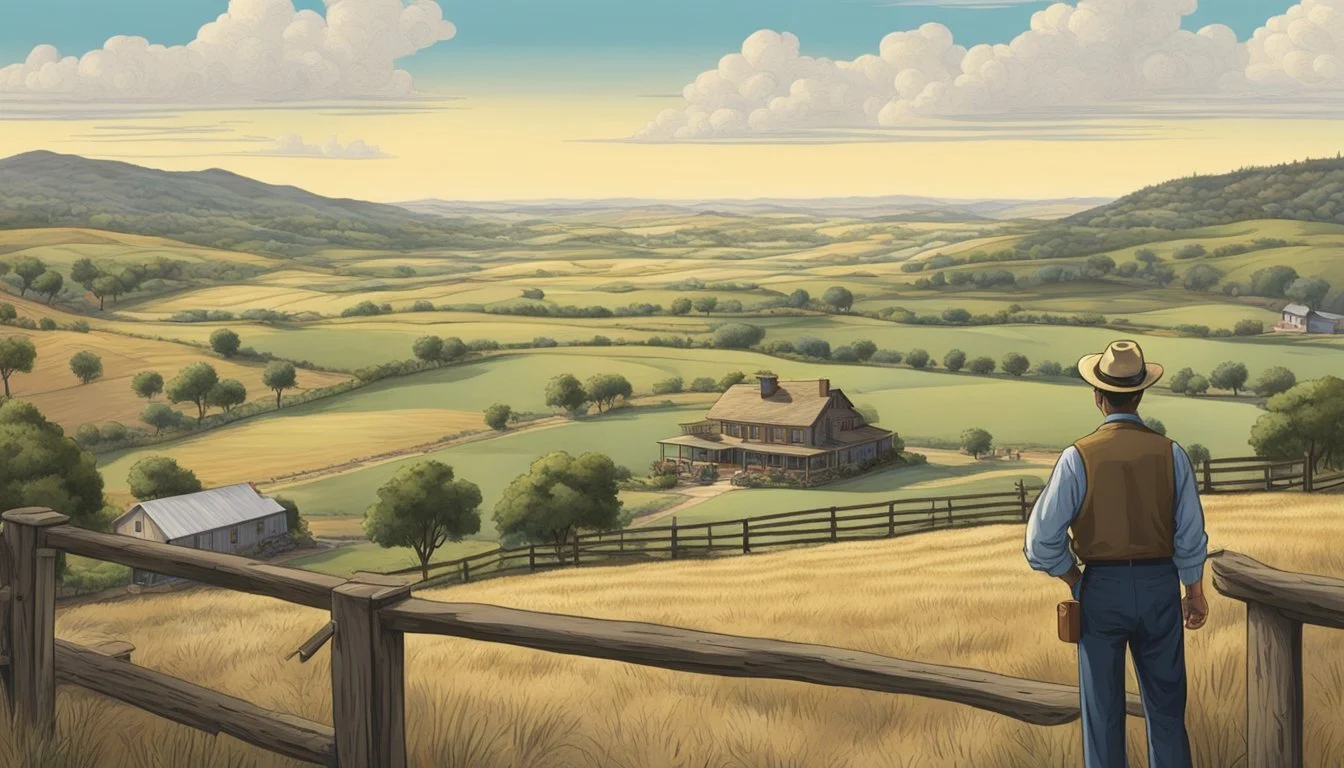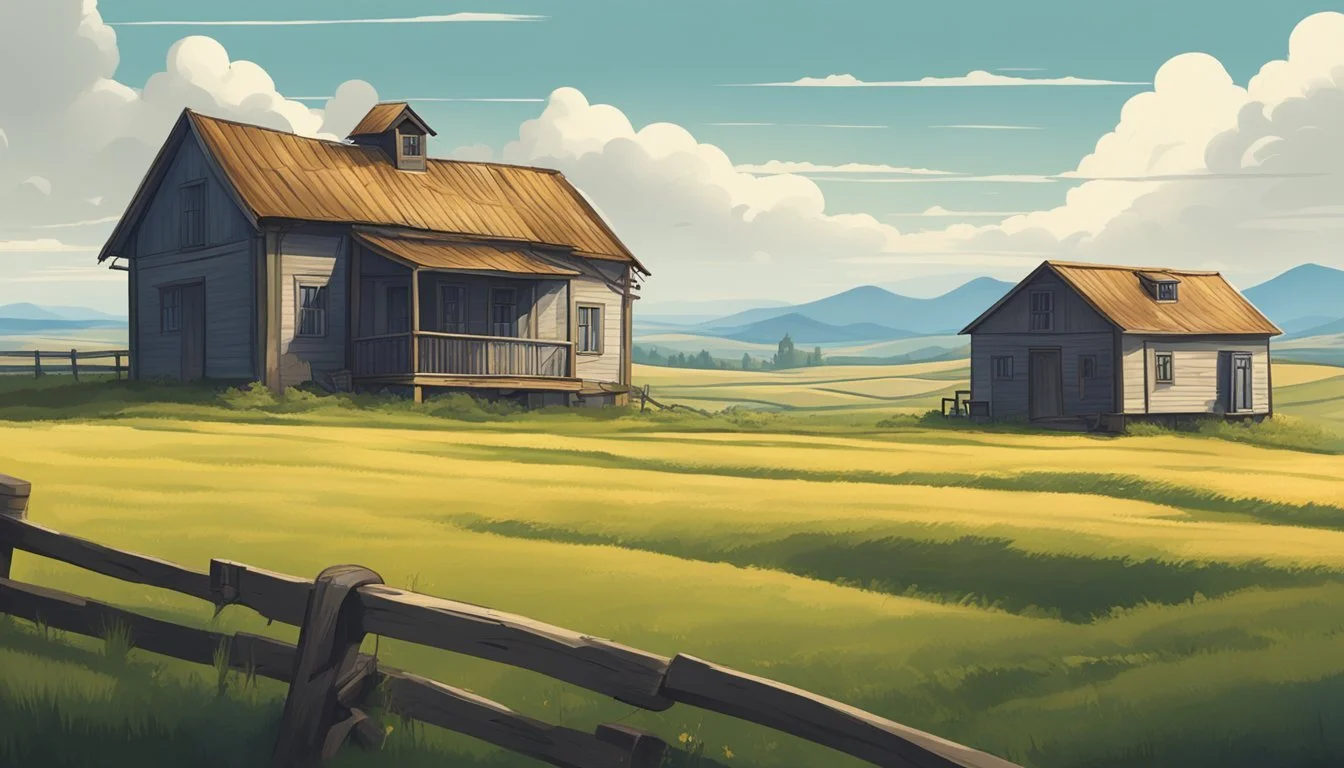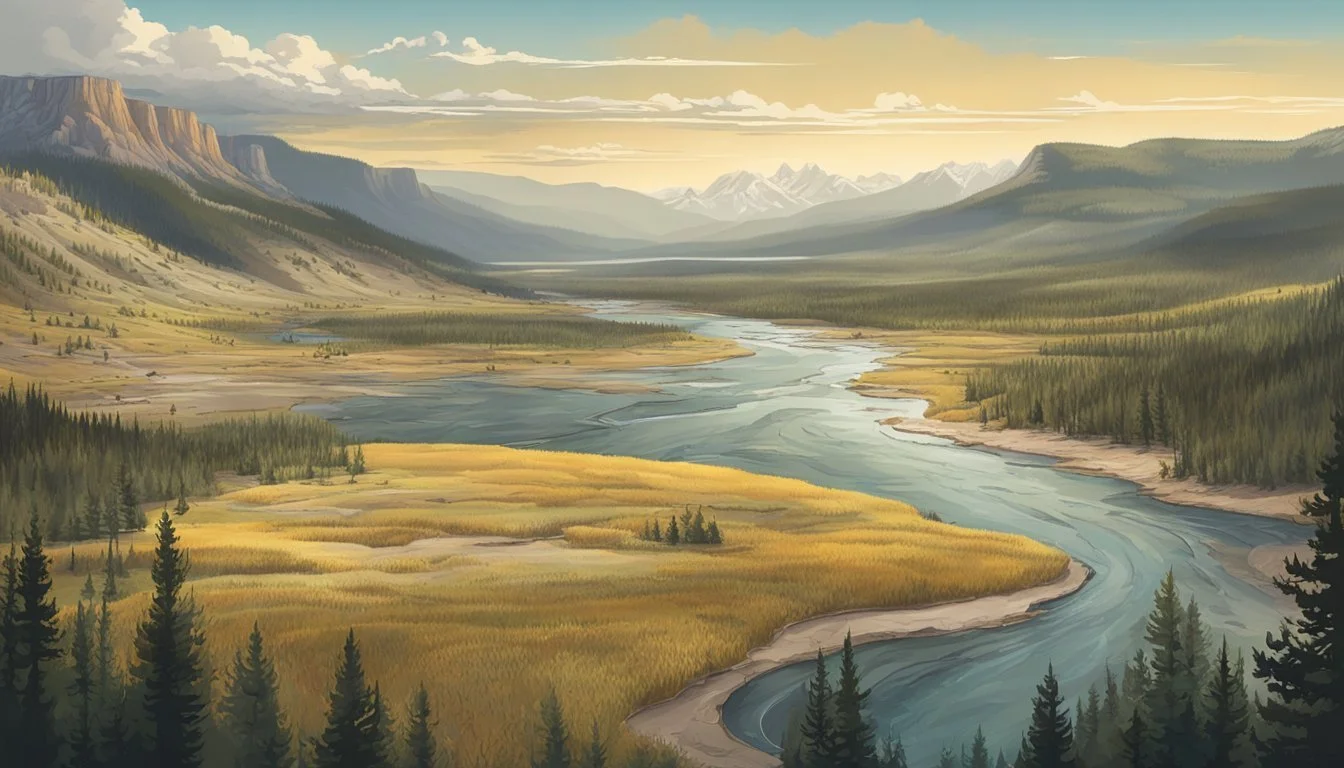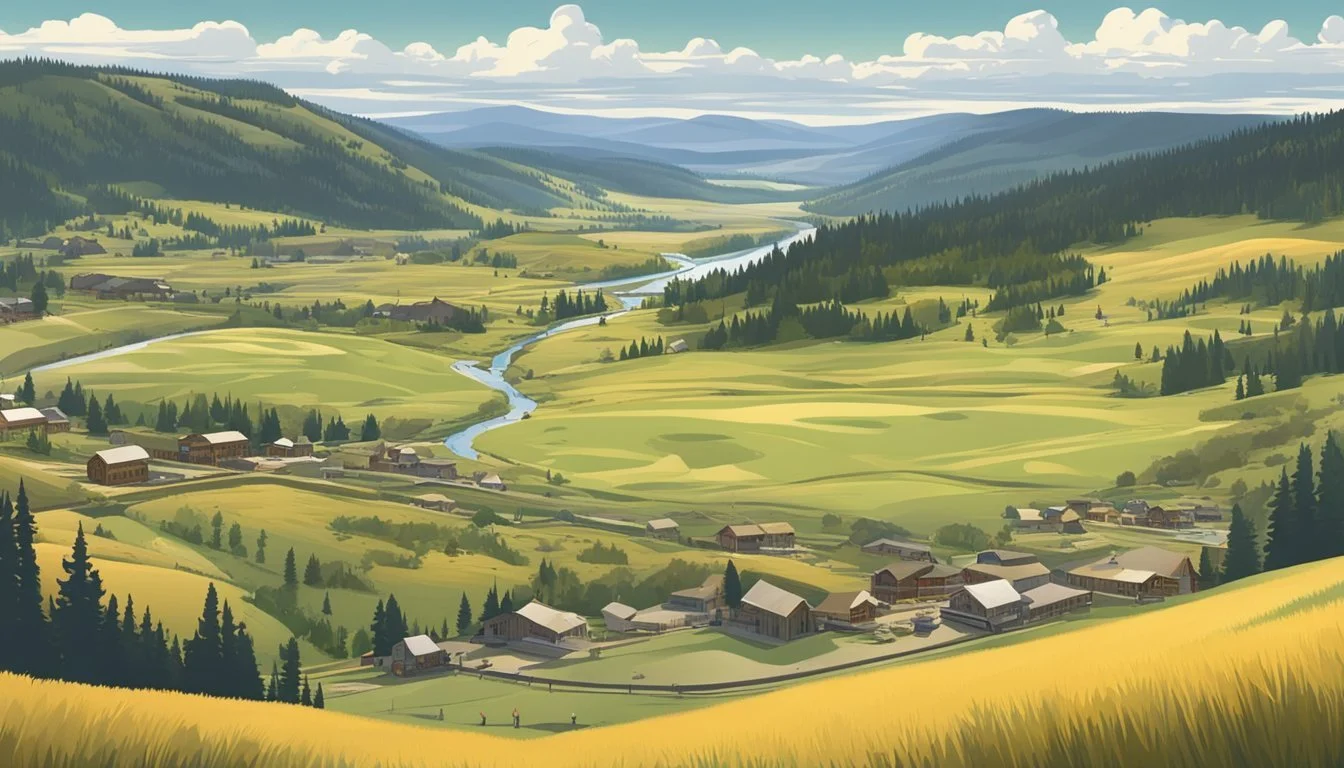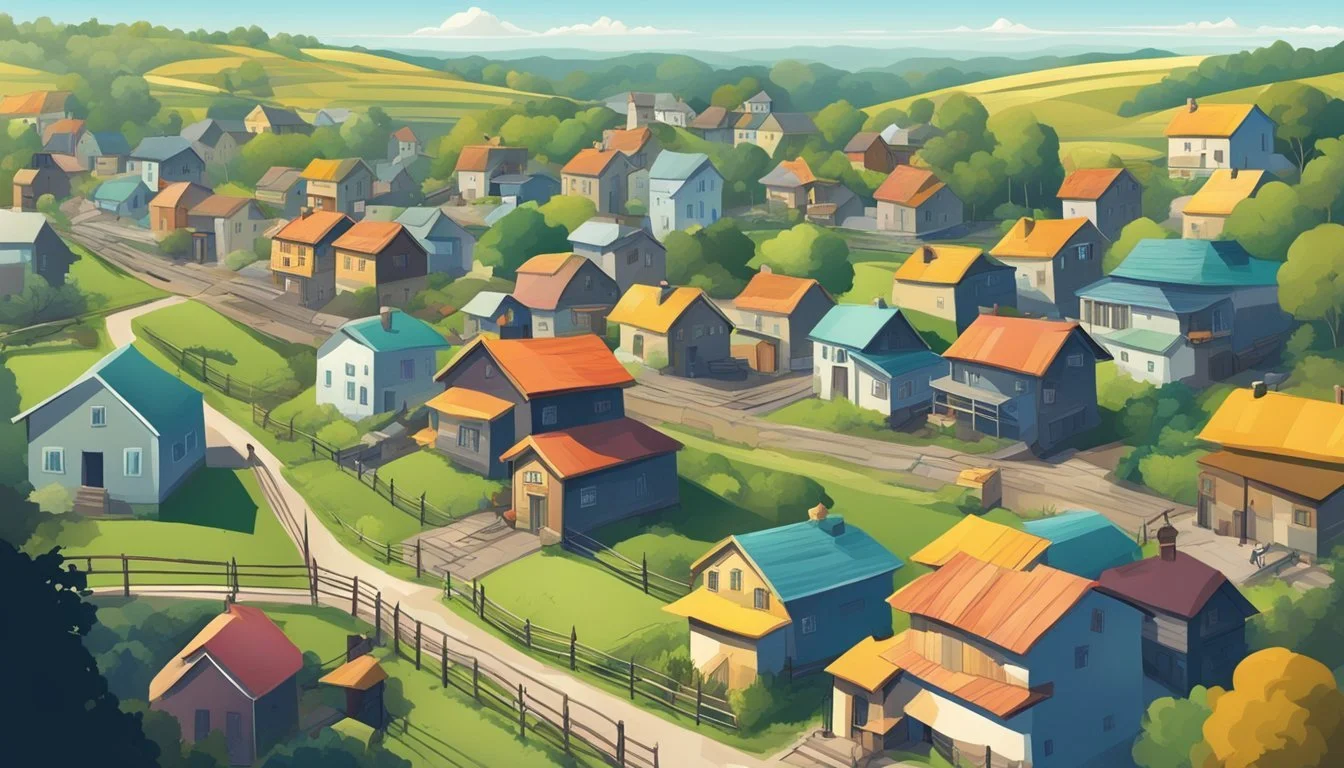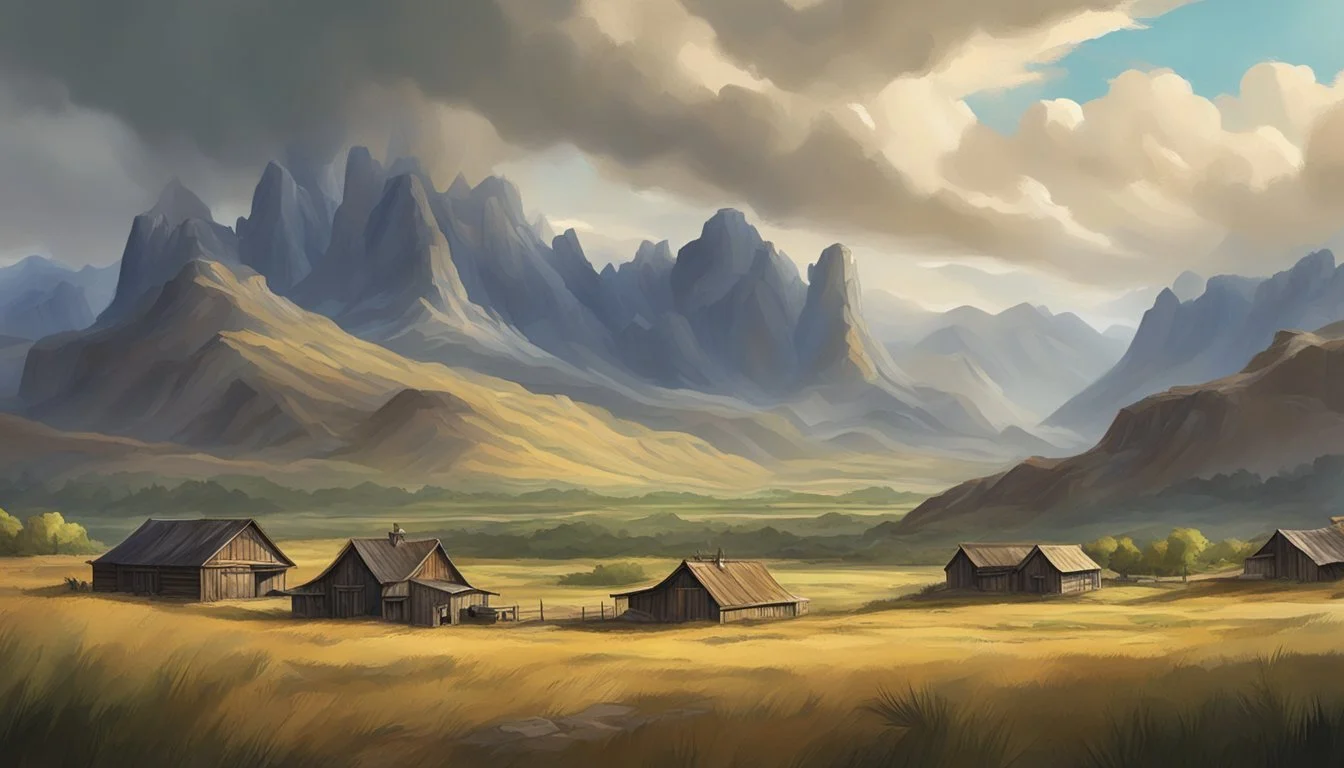Class Divisions in Yellowstone's Portrayal of Rural America
Examining Socioeconomic Gaps in the Hit TV Series
Yellowstone, the hit TV series, has captivated audiences with its portrayal of rural America and the complex socioeconomic issues facing the region. The show's popularity stems from its exploration of cultural and political divides that resonate with viewers across the country. Yellowstone taps into real-world tensions between urban and rural perspectives, challenging stereotypical portrayals of rural America as simplistic or backward.
The series delves into themes of land ownership, wealth disparity, and conflicting interests between preservation and development. At its core, Yellowstone examines the struggle of the Dutton family to maintain control of their vast ranch, serving as a microcosm for broader socioeconomic challenges. This narrative reflects the ongoing conflicts between traditional rural values and the encroachment of corporate interests and urban development.
Yellowstone's depiction of class divisions in rural America has struck a chord with audiences, giving voice to perspectives often overlooked in mainstream media. The show's success highlights the desire for nuanced representations of rural life and the complex dynamics at play in these communities. By exploring these themes, Yellowstone offers viewers a window into the cultural battle for the American West and the tensions that continue to shape the region's future.
Historical Context of Rural America in 'Yellowstone'
The Yellowstone series draws heavily on the rich history of the American West, particularly Montana's ranching heritage. It weaves together elements of 19th century frontier expansion, early 20th century ranch life, and modern rural challenges.
The Origin of the Dutton Family Saga
The Dutton family's journey begins in 1883, during the height of westward expansion. James Dutton, the patriarch, leads his family from Texas to Montana in search of new opportunities. This migration reflects the real-life experiences of many families who braved harsh conditions to settle the frontier.
The series depicts the dangers and hardships faced by pioneers. Disease, hostile encounters, and treacherous landscapes all threaten the Duttons' survival. Their perseverance in establishing the Yellowstone Ranch mirrors the determination of actual homesteaders who shaped the American West.
James Dutton's character embodies the rugged individualism often associated with frontier settlers. His actions lay the foundation for the family's deep connection to the land, a theme that resonates throughout the Yellowstone saga.
Representation of the 1883 Migration
The 1883 migration portrayed in Yellowstone captures a pivotal moment in American history. It showcases the mass movement of people seeking to claim land under the Homestead Act of 1862. This representation highlights the complex interactions between settlers, Native Americans, and the untamed wilderness.
Yellowstone's depiction of this era emphasizes the harsh realities of frontier life. Wagons struggle through unforgiving terrain, echoing the actual challenges faced by migrants. The show also touches on the displacement of Indigenous peoples, a critical aspect of westward expansion often overlooked in romanticized versions of the Old West.
The series portrays the diverse mix of individuals who participated in this migration. European immigrants, freed slaves, and disillusioned Civil War veterans all sought new beginnings in Montana's vast landscapes.
Depiction of Early Ranch Life in Montana
Yellowstone's portrayal of early ranch life in Montana focuses on the late 19th and early 20th centuries. It showcases the transition from open range grazing to fenced properties and the rise of large cattle operations. The Dutton ranch serves as a microcosm of this evolving agricultural landscape.
The series highlights the physical demands of ranching in Montana's harsh climate. Characters contend with brutal winters, unpredictable weather, and the constant threat of predators. These challenges reflect the real struggles faced by Montana ranchers of the era.
Yellowstone also explores the economic realities of early ranch life. Cattle drives, disputes over water rights, and conflicts with sheep herders all feature prominently. These elements draw from historical tensions that shaped Montana's ranching industry.
Contemporary Portrayal of Rural America
Yellowstone offers a complex depiction of modern rural America, blending traditional Western themes with contemporary issues. The show explores class divisions, land conflicts, and cultural clashes against the backdrop of Montana's rugged landscape.
Yellowstone Ranch: A Modern Western Epic
The Yellowstone Ranch serves as the centerpiece of the series, embodying the essence of the modern Western. Set in Paradise Valley, Montana, the sprawling property represents both the grandeur and the challenges of maintaining a large-scale ranching operation in the 21st century. The ranch's vast acreage and scenic beauty contrast sharply with the economic pressures and political maneuvering threatening its existence.
The Dutton family's struggles to maintain their way of life reflect broader tensions in rural America. Their efforts to preserve traditional ranching practices while adapting to changing markets and regulations highlight the complexities faced by many agricultural communities today.
Cultural and Political Dynamics in Modern Rural America
Yellowstone portrays a rural landscape shaped by competing interests and ideologies. The series depicts tensions between ranchers, developers, and environmentalists, each with their own vision for the land's future. Political dynamics play a crucial role, with local and state-level power struggles influencing the characters' fates.
Water rights emerge as a key issue, reflecting real-world conflicts over this vital resource in the American West. The show also touches on environmental regulations and their impact on ranching operations, illustrating the balancing act between conservation and economic survival.
The Duttons' Ongoing Struggle for Land Preservation
At the heart of Yellowstone's narrative is the Dutton family's fight to maintain control of their ancestral lands. Their methods, often ruthless and legally questionable, raise moral dilemmas about the lengths one might go to preserve a way of life.
The show explores how economic pressures, including offers from developers and outside investors, threaten to fragment and commercialize rural spaces. This struggle resonates with real-world concerns about the loss of family farms and ranches to corporate interests and urban expansion.
Native American Characters and Land Rights
Yellowstone incorporates Native American perspectives through characters like Thomas Rainwater, adding depth to its portrayal of land rights issues. The series explores historical injustices and ongoing conflicts between tribal nations and non-Native landowners.
Native characters in the show grapple with balancing traditional values and modern realities. Their efforts to reclaim ancestral lands and assert sovereignty create additional layers of conflict and complexity in the show's representation of rural America.
The portrayal of these issues, while sometimes dramatized for television, reflects real tensions and negotiations occurring in many parts of the American West today.
Environmental and Conservation Themes
Yellowstone explores the complex interplay between ranching, wildlife conservation, and environmental regulations in rural America. The show highlights tensions between traditional land use and modern conservation efforts.
Wildlife Habitat and Ranching Interactions
The Dutton ranch borders Yellowstone National Park, creating a unique setting where wildlife and livestock coexist. Grizzly bears and wolves sometimes venture onto ranch lands, leading to conflicts. Ranchers must balance protecting their herds with respecting wildlife.
The show depicts challenges ranchers face adhering to environmental regulations while maintaining profitable operations. Scenes portray ranch hands implementing wildlife-friendly fencing and adjusting grazing patterns to minimize impacts on sensitive habitats.
Yellowstone illustrates how ranches can serve as buffers between developed areas and protected lands, providing important corridors for wildlife movement.
Paradise Ranch's Role in Conservation
The fictional Paradise Valley Ranch showcases conservation-minded ranching practices. Sustainable grazing techniques help maintain native grasslands that support both cattle and wildlife. The ranch demonstrates how working lands can contribute to landscape-scale conservation.
Paradise Ranch partners with environmental groups on habitat restoration projects. This cooperation highlights potential common ground between ranchers and conservationists.
The show explores economic pressures that threaten large ranches. It raises questions about how to incentivize landowners to maintain open spaces that benefit wildlife and ecosystems.
Challenges of Endangered Species Protection
Yellowstone tackles issues surrounding the Endangered Species Act (ESA). The presence of grizzly bears, a threatened species, creates complications for ranchers and developers in the region.
The show portrays debates over removing grizzlies from ESA protections. It explores tensions between local control and federal oversight of wildlife management.
Scenes depict challenges of coexisting with large predators. Ranchers implement non-lethal deterrents to protect livestock while respecting bear conservation goals.
The series raises questions about balancing species recovery with human needs in a changing West. It shows how ESA decisions impact rural livelihoods and land use patterns.
Socioeconomic Issues and Gentrification
Yellowstone portrays complex socioeconomic challenges facing rural America. The series highlights conflicts over land ownership, development pressures, and the changing dynamics of small towns.
Struggle over Property and Land Development
The Dutton family's fight to maintain control of their sprawling ranch forms a central conflict in Yellowstone. Their struggle represents broader tensions between preserving traditional rural lifestyles and accommodating modern development pressures.
Private property rights clash with corporate interests seeking to exploit land for profit. The show depicts battles over proposed projects like airports and luxury resorts that threaten to transform the rural landscape.
Land developers are often portrayed as outsiders who fail to understand or respect local ways of life. Their efforts to acquire and develop property create friction with long-time residents trying to preserve their heritage.
Small-Market Towns Facing Modern Economic Pressures
Yellowstone's fictional setting mirrors real small towns grappling with economic changes. These communities struggle to maintain their identities while adapting to new realities.
Tourism and outdoor recreation bring economic opportunities but also strain local infrastructure and housing markets. Long-time residents may find themselves priced out as property values rise.
The influx of wealthy outsiders seeking vacation homes or investment properties alters the social fabric of rural communities. This can lead to resentment as newcomers and longtime locals clash over differing values and priorities.
Impact of Gentrification on Rural Communities
Gentrification poses unique challenges in rural settings like those depicted in Yellowstone. As wealthy urbanites move in, they often bring different expectations and lifestyles.
Rising property values can benefit some landowners but make it difficult for working-class families to remain. Young people may struggle to afford homes in the communities where they grew up.
Traditional industries like ranching face pressure as land becomes more valuable for other uses. This threatens not just livelihoods but entire ways of life that have defined these areas for generations.
Cultural tensions arise as newcomers seek to reshape rural communities. Long-time residents may feel their values and traditions are being eroded or dismissed by those who don't understand rural life.
Cultural and Family Dynamics
Yellowstone portrays complex cultural and family dynamics in rural America, centering on the influential Dutton family. The series explores how ranching traditions shape identities and relationships in the region.
Role of the Dutton Family in Shaping Regional Identity
The Dutton family, led by patriarch John Dutton (Kevin Costner), embodies the essence of Montana ranching culture. Their vast Yellowstone Ranch serves as a symbol of power and tradition in the region. The Duttons' fierce protection of their land reflects broader cultural values of independence and self-reliance.
John Dutton's leadership style and decisions often clash with modern societal changes, highlighting tensions between traditional rural lifestyles and encroaching development. This conflict resonates with many viewers who identify with the struggle to preserve local heritage.
The family's prominence in local politics and business affairs demonstrates their far-reaching influence on the community's social fabric.
Ranching Families and the Preservation of a Lifestyle
Yellowstone depicts ranching families as guardians of a vanishing way of life. The series showcases the daily challenges and rewards of running a large-scale ranch operation. Cattle drives, branding, and land management practices are portrayed as integral parts of this lifestyle.
The show emphasizes the multigenerational nature of ranching, with skills and values passed down through families. This continuity is presented as crucial for maintaining ranching traditions and land stewardship.
Yellowstone also explores the economic pressures facing modern ranchers, including conflicts with developers and changing market conditions. These challenges threaten the sustainability of the ranching lifestyle.
Interpersonal Relationships within the Yellowstone Series
The series delves into complex family dynamics within the Dutton clan. Sibling rivalries, parent-child conflicts, and loyalty tests are recurring themes that drive the plot forward. These relationships often reflect broader cultural tensions in rural communities.
Romantic relationships in Yellowstone frequently cross socioeconomic boundaries, highlighting class divisions. The show depicts how personal connections can both reinforce and challenge existing social structures.
Friendships and alliances formed on the ranch demonstrate the tight-knit nature of rural communities. The series explores how these bonds are tested by external pressures and changing circumstances.
Yellowstone also touches on the integration of outsiders into the local culture, examining themes of acceptance and resistance to change.
Impact of Contemporary Global Events
"Yellowstone" reflects the changing landscape of rural America amid global shifts. The show's portrayal adapts to real-world events, offering insights into how modern challenges affect traditional ways of life.
Yellowstone's Response to COVID-19
The COVID-19 pandemic influenced "Yellowstone's" production and storylines. Filming protocols changed to ensure cast and crew safety. The show incorporated pandemic-related themes subtly, showcasing rural communities' resilience.
Characters faced economic pressures mirroring real-world struggles. Ranch operations adapted to new health guidelines. The Dutton family's isolation on their vast property resonated with viewers experiencing lockdowns.
"Yellowstone" highlighted rural healthcare challenges during the crisis. Limited medical resources in remote areas became a plot point. The show's depiction of community support during tough times struck a chord with audiences.
Representation of Rural America in the 21st Century
"Yellowstone" offers a nuanced portrayal of modern rural America. Creator Taylor Sheridan draws from his experiences to depict the complexities of life in Middle America.
The show balances traditional values with contemporary issues. Characters grapple with technological advancements and changing social norms. Environmental concerns, such as land conservation and resource management, feature prominently.
"Yellowstone" addresses rural economic challenges. It depicts the struggle to maintain traditional livelihoods in a changing economy. The show explores tensions between locals and outsiders, reflecting real-world debates about rural development.
Cultural clashes between urban and rural perspectives are a recurring theme. The series examines how global events impact local communities. It showcases the resilience and adaptability of rural residents in the face of modern challenges.
Cinematic Influence and Public Perception
Yellowstone's portrayal of rural America has captivated audiences through its cinematic style and storytelling. The show's visual and narrative approach shapes viewers' perceptions of the modern American West.
Taylor Sheridan's Storytelling and Influence
Taylor Sheridan's distinctive vision brings the world of Yellowstone to life. His background in acting and screenwriting informs his approach to crafting complex characters and plotlines.
Sheridan's storytelling emphasizes the gritty realities of life in Montana, blending traditional Western themes with contemporary issues. His focus on land disputes, family dynamics, and political intrigue resonates with viewers across the country.
The show's cinematography showcases Montana's stunning landscapes, elevating the visual experience to rival feature films. This high production value contributes to Yellowstone's appeal and helps immerse audiences in its world.
Audience Reception and Cultural Impact
Yellowstone has become a cultural phenomenon, attracting a diverse and dedicated fanbase. The show's portrayal of rural life and values has struck a chord with viewers, particularly in Middle America.
Its popularity has led to increased tourism in Montana, as fans seek to experience the landscapes depicted in the series firsthand. This influx of visitors has brought both economic benefits and challenges to local communities.
The series has sparked discussions about class divisions, land rights, and the changing face of the American West. It has also influenced fashion trends, with viewers embracing Western-inspired clothing and accessories.
Yellowstone's success has paved the way for spin-off series and similar productions, further expanding its cultural footprint and shaping public perceptions of rural America.

